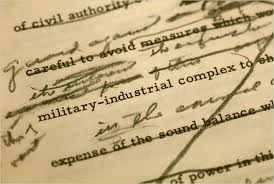Ned O’Gorman
LIBERTY’S EMPIRE: LIBERAL LINEAGES OF THE NATIONAL SECURITY STATE
 Professor O’Gorman’s new book project, Liberty’s Empire: Liberal Lineages of the National Security State, examines the 19th- and 20th-century intellectual, ideological, and rhetorical roots of the National Security State. From 1946 to 1958, Presidents Truman and Eisenhower, in cooperation with Congress, signed a series of laws and executive orders that would create a permanent National Security State. It would make the United States a “superpower,” putting US military, economic, and diplomatic power at the center of global politics. As importantly, it also entailed a radical transformation in American governance and power. Liberty’s Empire examines what made this radical transformation possible and plausible. As such, it offers what other important histories of the National Security State do not: a genealogy—a study of lines of descent and development.
Professor O’Gorman’s new book project, Liberty’s Empire: Liberal Lineages of the National Security State, examines the 19th- and 20th-century intellectual, ideological, and rhetorical roots of the National Security State. From 1946 to 1958, Presidents Truman and Eisenhower, in cooperation with Congress, signed a series of laws and executive orders that would create a permanent National Security State. It would make the United States a “superpower,” putting US military, economic, and diplomatic power at the center of global politics. As importantly, it also entailed a radical transformation in American governance and power. Liberty’s Empire examines what made this radical transformation possible and plausible. As such, it offers what other important histories of the National Security State do not: a genealogy—a study of lines of descent and development.
Important studies have examined postwar the legislative and executive debates and decisions that led to the National Security State. What no comprehensive history has yet done is examine the intellectual, ideological, and rhetorical lineages that informed and structured these postwar debates and decisions. This study therefore offers a new contribution to literature on the National Security State. To do so, it turns to the history of modern liberal thought, beginning in the middle of the 19th century and extending through the middle of the 20th century. Professor O’Gorman’s argument centers on a paradox: despite the illiberal character of the National Security State—it has been shrouded in secrecy, operated with relative unaccountability, even impunity, and is centered in forms of executive authority that are inimical to democratic governance—its intellectual, ideological, and rhetorical lineage is found in liberal thought as it was developed in the 19th and early- 20th centuries.
